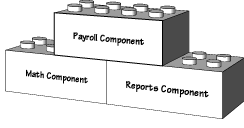
The Java programming environment from Sun Microsystems is designed for developing programs that run on many different kinds of networked computers. Because of its multiplatform capabilities, Java shows great promise for relieving many of the headaches that developers encounter when they are forced to migrate code between different types of operating systems. Code that is written in Java should run on all of the most popular platforms-everything ranging from Macintosh and Windows/Intel machines to Linux and Solaris boxes. Recently, the cross-platform capabilities of Java have been called into question. This has led Sun's marketing phrase "write once, run anywhere" to be reinterpreted by skeptics as "write once, test everywhere." Part of the problem is that not all implementations of Java are completely interoperable with Sun's version. Disagreement over what constitutes Java has generated at least one high-profile lawsuit. Most people, including a majority of Java developers, would like to see Java become a standard so that what happened to C (which was itself supposed to be a cross-platform language) doesn't happen to Java. In any case, a nice side effect of Java's built-in portability is that one special kind of Java program (popularly known as an applet) can be attached to a Web page. More technically speaking, applets are embedded into a Web page's hypertext markup language (HTML) definition and executed by Java-savvy browsers.2 Such Java-enabled browsers automatically download and begin running any Java applet they find embedded in a Web page. Java code's ability to run on many diverse platforms makes such "magic" possible. The ability to dynamically download and run Java code over the Net has led some computer pundits to proclaim that the age of truly component-based software development may actually have arrived. The idea is that instead of buying huge monolithic word processing behemoths with hundreds of obscure features that most users will never need, users can instead "create" a personal word processor on the fly out of Java building blocks. This modern sort of programming is akin to building a large toy ship out of Legos blocks. Or, more realistically, the process of creating a component-based software product could be likened to building a highway bridge out of standardized structural components. Sun is advocating a Java component architecture called JavaBeans. A number of companies are creating sets of JavaBeans for various purposes. If these efforts are successful, developers will be able to create programs by putting together sets of prefabricated Beans as illustrated in Figure 1.1. Microsoft's Component Object Model (COM) is very much oriented this way, although it is not specifically designed to use Java. Component-based software has its own interesting security implications and open questions. For example, how can the developer of a system trust a component manufacturer not to have (purposefully or accidentally) introduced security holes into the system? How can a component manufacturer anticipate all uses to which a component will be put? And so on. These sorts of questions are the topic of current research, including some by the authors of this book.
Thinking even farther into the future, one can imagine a fundamentally new kind of computer document that contains the word processing, spreadsheet, and database software that was used to create it. Using a document's embedded components, a writer or editor could modify the document on any platform. The built-in components would allow different people using different machines to edit the document without worrying about the kind of computer they are using or file type compatibility issues. If Java is developed to its full potential, this future world may not be far off. The new idea behind all of these exciting aspects of Java is simple: the ability to send data that can be automatically executed wherever it arrives, anywhere on the Net. Java is an implementation of executable content, or mobile code. This powerful idea opens up many new possibilities on the World Wide Web. For the first time it is possible to have users download from the Web and locally run a program written in a truly common programming language. These features of Java are certainly exciting; however, Java's fantastic potential is mitigated by serious security concerns. Security is always an issue when computers are networked. Realistically speaking, no computer system is 100-percent secure. Users of networked computers must weigh the benefits of being connected to the world against the risks that they incur simply by connecting. In practice, the goal of a security policy is to make such tradeoffs wisely. One of the key selling points of Java is its use as a "cross-platform" language for creating executable content in the highly interconnected world of the Internet. Simply by using a Web browser, a Web surfer can take advantage of Java's cross-platform capability. Of course, the activity of locally running code created and compiled somewhere else has important security implications. These implications are one focus of this book. The same risks and benefits that apply to connecting to the Internet itself directly apply to using the Java language. As you will see, these concerns become particularly critical when "surfing the Web." The same technology that allows Java applets to enliven once-static Web pages also allows unscrupulous applet designers to invade an unsuspecting Java user's machine. With Java applets showing up everywhere, and many millions of people using Java-enabled browsers, it pays to know where you are pointing your browser.

Chapter... Preface -- 1 -- 2 -- 3 -- 4 -- 5 -- 6 -- 7 -- 8 -- 9 -- A -- B -- C -- Refs
Copyright ©1999 Gary McGraw and Edward Felten. |


